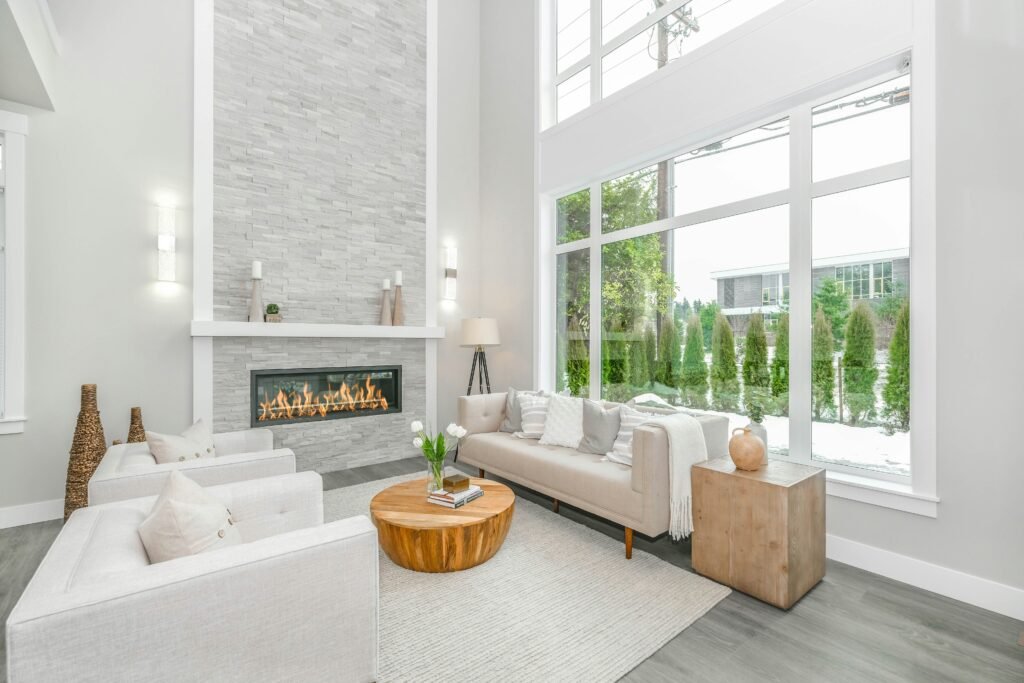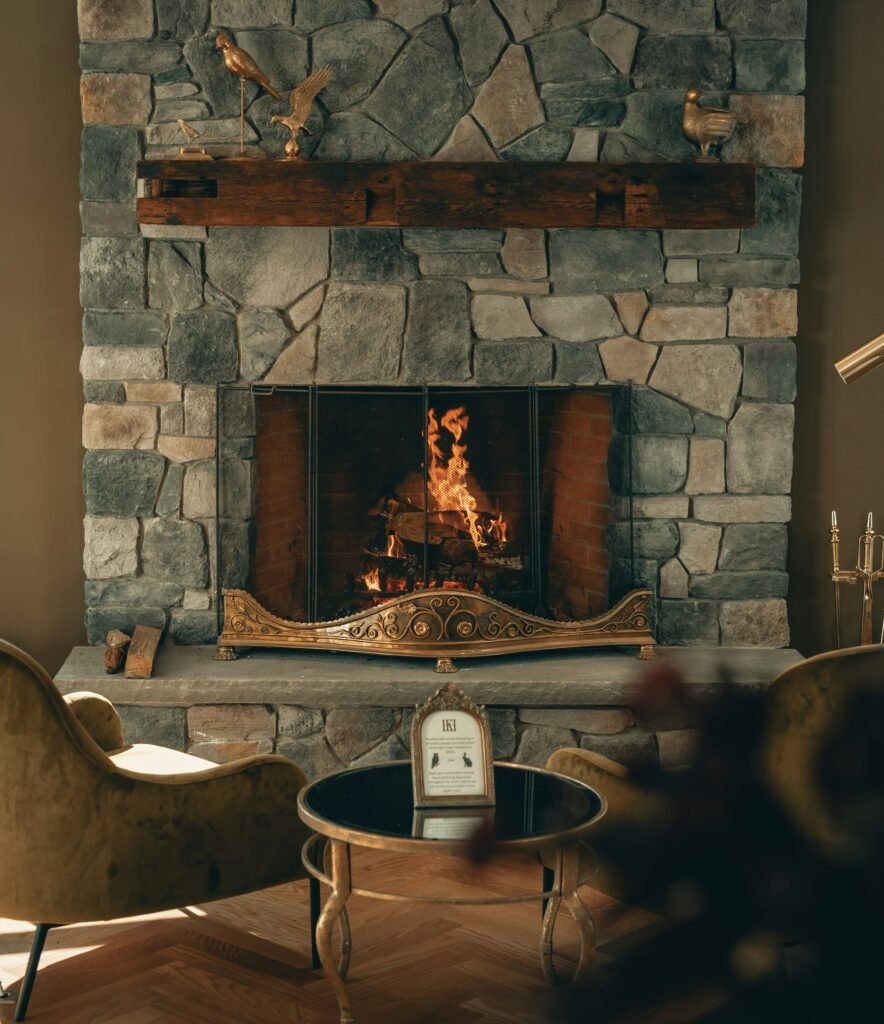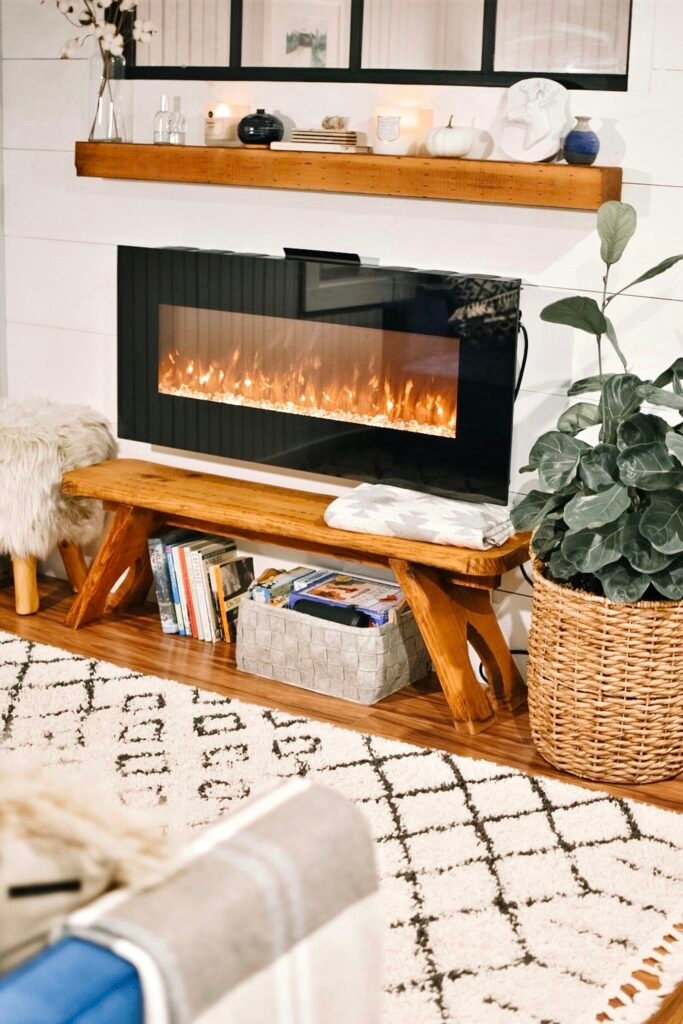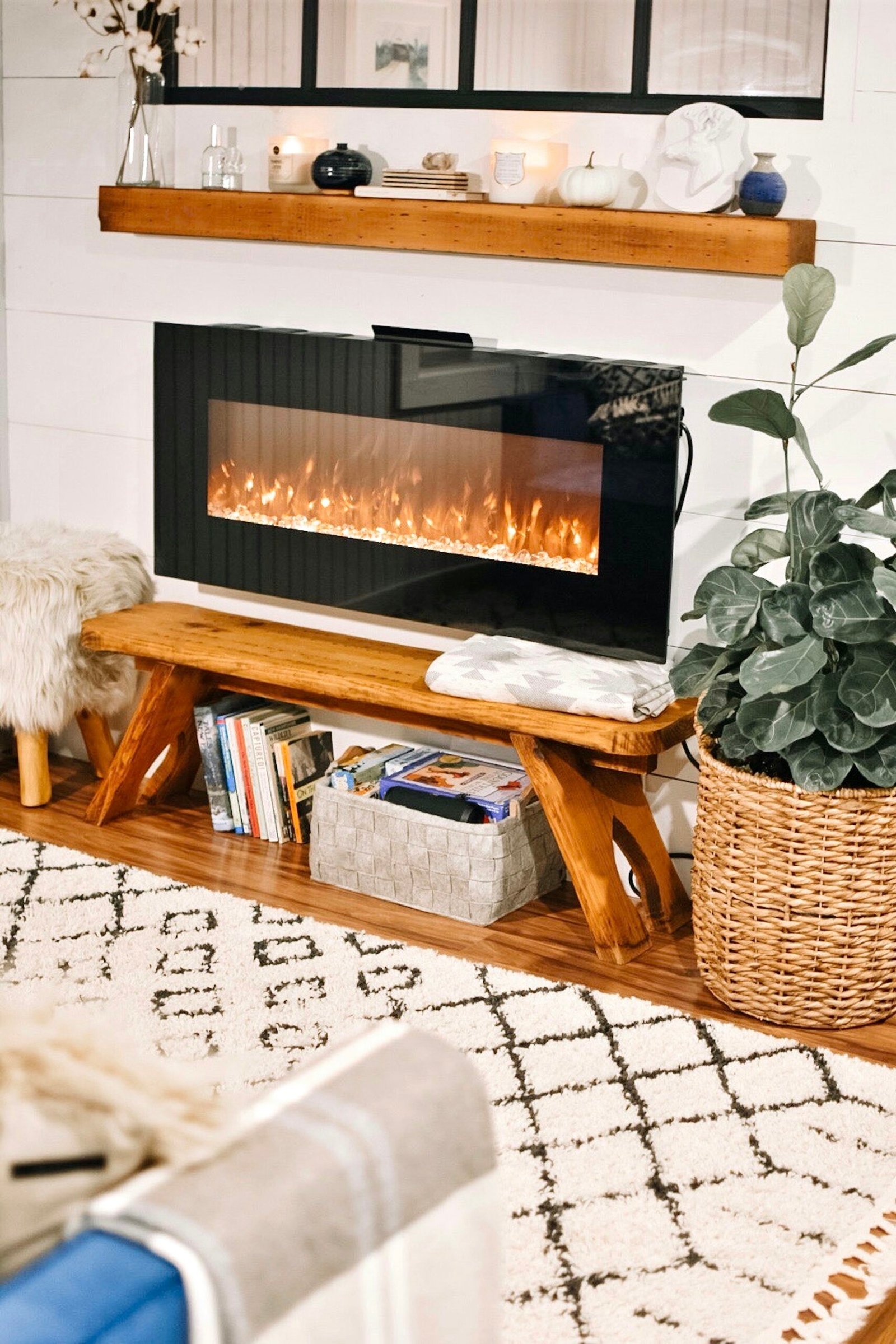Are you looking for ways to make your fireplace more efficient? Look no further! In this article, we will explore the top tips and tricks to help you upgrade your fireplace and maximize its efficiency. From choosing the right materials to improving insulation, we’ve got you covered. Get ready to transform your hearth into an energy-saving powerhouse with our fireplace greenovation guide.
1. Choose the Right Fireplace Insert
When it comes to upgrading your fireplace for efficiency, the first step is to choose the right fireplace insert. Consider your heating needs and the layout of your home to determine the best option for you.
Consider your heating needs
Before selecting a fireplace insert, it’s important to consider your heating needs. Are you looking to heat a single room or the entire house? Do you want a fireplace that is primarily for ambiance, or do you want it to be a primary heat source? Understanding your heating needs will help you narrow down your options and choose the most suitable fireplace insert.
Types of fireplace inserts
There are several types of fireplace inserts available, including wood-burning, gas, electric, and pellet inserts. Each type has its own advantages and considerations. Wood-burning inserts provide a cozy and traditional ambiance, but require manual fueling and maintenance. Gas inserts offer convenience and efficiency, but may require access to a gas line. Electric inserts are easy to install and use, but may not provide as much heat. Pellet inserts use wood pellets as fuel, offering convenience and eco-friendliness.
Selecting the right size and fuel type
Once you have determined the type of fireplace insert that best suits your needs, it’s important to select the right size and fuel type. The size of the insert should match the size of the existing fireplace opening or the space where you plan to install it. Proper sizing ensures optimal heat output and efficiency. Additionally, consider the fuel type that is most convenient and suitable for your lifestyle. Wood-burning inserts require a steady supply of firewood, while gas and electric inserts offer more convenience and ease of use.
2. Improve Insulation and Sealing
To maximize the efficiency of your fireplace, it is crucial to improve insulation and sealing in the surrounding areas. This will prevent heat loss and ensure that the warmth stays inside your home.
Insulate the walls around the fireplace
Proper insulation of the walls around the fireplace can significantly reduce heat loss. Insulating materials such as fiberglass batts or mineral wool can be installed in the gaps between the walls and the fireplace. This will help to create a thermal barrier and prevent the escape of warm air.
Seal gaps and leaks
Inspect the fireplace and the surrounding areas for any gaps or leaks that may be allowing cold air to enter or warm air to escape. Use caulk or weatherstripping to seal these gaps and prevent energy loss. Common areas to check for gaps include the area between the fireplace and the wall, the hearth, and the chimney.
Add weatherstripping to doors and windows
In addition to sealing gaps around the fireplace, it’s essential to pay attention to doors and windows in the room. Installing weatherstripping around these areas will further minimize heat loss and improve energy efficiency. Weatherstripping provides a tight seal and prevents drafts, ensuring that the warmed air stays inside and the cold air stays out.

This image is property of images.unsplash.com.
Get A More Efficient Fireplace
3. Install a Heat-Resistant Fireplace Door
Installing a heat-resistant fireplace door offers several benefits and can greatly improve the efficiency of your fireplace.
Benefits of fireplace doors
Fireplace doors provide a barrier between the room and the fireplace, preventing the escape of warm air and the entry of cold drafts. They also act as a safety measure, keeping sparks and embers from flying out into the room. Additionally, fireplace doors can enhance the visual appeal of your fireplace, giving it a more finished and polished look.
Types of fireplace doors
There are various types of fireplace doors available, including glass doors, mesh doors, and combination doors. Glass doors provide a clear view of the fire while still offering protection and insulation. Mesh doors are made of a metal mesh that allows heat to radiate into the room while providing some safety. Combination doors combine both glass and mesh, offering the benefits of both options.
Installation considerations
When installing a fireplace door, it’s important to choose a heat-resistant material and ensure proper installation. The door should fit securely and have a tight seal to prevent heat loss. It’s recommended to hire a professional for the installation to ensure it is done correctly and safely.
4. Upgrade to an Energy-Efficient Wood Stove
If you have a wood-burning fireplace, upgrading to an energy-efficient wood stove can significantly enhance both the heating efficiency and the overall ambiance of your home.
Advantages of wood stoves
Wood stoves are designed to burn wood more efficiently than traditional fireplaces. They have a closed combustion system that provides better control of the airflow and combustion process, resulting in increased heat output and reduced fuel consumption. Wood stoves also radiate heat more effectively, allowing you to heat larger areas with less effort.
High-efficiency wood stove options
When choosing a wood stove, look for models that are EPA-certified for high efficiency. These stoves are designed to meet strict environmental standards and use less wood while producing more heat. Look for stoves with features such as secondary combustion, which burns off the smoke and gases for a cleaner and more efficient burn.
Proper installation and maintenance
Proper installation and maintenance are key to getting the most out of your energy-efficient wood stove. Ensure that the stove is installed by a professional to meet all safety and building code requirements. Regular cleaning and maintenance, such as removing ashes and ensuring proper airflow, will keep your wood stove operating efficiently and safely.

This image is property of images.unsplash.com.
5. Consider a Gas Fireplace Conversion
Converting your traditional wood-burning fireplace to a gas fireplace can provide numerous benefits in terms of convenience, efficiency, and safety.
Benefits of converting to a gas fireplace
A gas fireplace offers instant heat with a simple flip of a switch or a push of a button. With no need to handle firewood or clean up ashes, a gas fireplace is highly convenient and hassle-free. Gas fireplaces also produce cleaner and more efficient combustion, resulting in less air pollution and higher heat output. Moreover, gas fireplaces eliminate the risk of sparks, embers, or chimney fires associated with wood-burning fireplaces.
Types of gas fireplaces
There are several types of gas fireplaces to consider, including built-in gas fireplaces, gas fireplace inserts, and gas log sets. Built-in gas fireplaces are standalone units that can be installed in various locations in your home. Gas fireplace inserts are designed to be retrofitted into an existing fireplace opening, providing a clean and efficient heating option. Gas log sets are decorative and provide the look of a traditional fireplace but with the convenience of gas.
Installation and safety precautions
When converting to a gas fireplace, it is crucial to hire a qualified professional for the installation. They will ensure that the gas line, venting system, and all safety features are properly installed and comply with local codes and regulations. Regular maintenance and inspections are also recommended to ensure the safe and efficient operation of the gas fireplace.
6. Utilize Fireplace Grates and Blowers
Using fireplace grates and blowers can maximize the efficiency of your fireplace by helping to distribute the heat more evenly throughout the room.
Benefits of fireplace grates and blowers
Fireplace grates are metal frames with bars that elevate the logs off the ground. By allowing airflow underneath the logs, grates facilitate better combustion and more efficient burning. This helps to generate more heat and reduce smoke.
Fireplace blowers, also known as fireplace fans, are devices that circulate the heated air from the fireplace throughout the room. They help to distribute the warmth more effectively, ensuring that no corner of the room is left cold.
Choosing the right grate and blower
When selecting a grate, choose one that fits properly in your fireplace and allows for sufficient airflow. Grates should be made of durable materials such as cast iron or steel to withstand high temperatures and frequent use.
For blowers, consider the size and power of the fan to ensure it can effectively distribute the heat in your room. Look for blowers that operate quietly and have adjustable speed settings for optimal comfort.
Proper usage and maintenance
To maximize the effectiveness of fireplace grates and blowers, it’s important to use and maintain them properly. Make sure to position the logs on the grate to allow for proper airflow. Keep the blower clean and free of dust or debris to maintain its efficiency. Regularly inspect the grate and blower for any signs of wear or damage, and replace them as necessary.

This image is property of images.unsplash.com.
7. Optimize Firewood Selection and Storage
Choosing the right firewood and storing it properly can greatly impact the efficiency of your fireplace.
Selecting the right firewood
When selecting firewood, choose hardwoods such as oak, maple, or birch, as they burn longer and produce more heat compared to softwoods like pine or spruce. The wood should be well-seasoned, meaning it has been dried for at least six months. Green or unseasoned wood has a higher moisture content, which requires more energy to burn and produces less heat.
Properly seasoning firewood
To season firewood, ensure that it is stored in a dry and well-ventilated area, such as a woodshed or covered rack. Stack the wood loosely to allow for airflow and prevent moisture buildup. It’s also crucial to protect the firewood from rain or snow by covering it with a tarp or using a waterproof storage container.
Storing firewood for optimal efficiency
Proximity to the fireplace is important when storing firewood. Keep a small amount of wood near the fireplace for convenient access and shorter-term storage, but avoid storing large quantities of wood directly next to the fireplace. This reduces the risk of pests and helps maintain a clean and organized living space.
8. Retrofit with a Fireplace Heat Exchanger
A fireplace heat exchanger can significantly improve the efficiency of your fireplace by capturing and utilizing heat that would otherwise be lost.
How a fireplace heat exchanger works
A fireplace heat exchanger is a device that is installed inside the fireplace or chimney. It works by capturing the hot air that rises up from the fire and transferring it to the surrounding room. The heat exchanger consists of tubes or chambers that allow the air to circulate and transfer its heat to a fan or duct system.
Types of heat exchangers
There are different types of fireplace heat exchangers available, including insert heat exchangers, grate heat exchangers, and chimney heat exchangers. Insert heat exchangers are installed inside the fireplace and are suitable for both masonry and prefabricated fireplaces. Grate heat exchangers are placed directly on the hearth and enhance the efficiency of open-hearth fireplaces. Chimney heat exchangers are installed in the chimney and capture heat from the flue gases.
Installation and benefits
Installation of a fireplace heat exchanger should be done by a professional to ensure proper fit and safe operation. The benefits of using a heat exchanger include increased heat output, reduced fuel consumption, and improved heating efficiency. By utilizing the heat that would otherwise be wasted, you can enjoy a warmer and more comfortable living space while minimizing energy waste.
9. Regular Fireplace Maintenance and Cleaning
Regular maintenance and cleaning are essential to keep your fireplace operating efficiently and safely.
Importance of regular maintenance
Regular maintenance helps identify and address any issues with your fireplace before they become major problems. It also ensures that your fireplace continues to operate at its peak efficiency, providing optimal heating performance and reducing the risk of hazards or malfunctions.
Cleaning the fireplace and chimney
Cleaning the fireplace and chimney helps remove creosote buildup, which is a byproduct of burning wood. Creosote is highly flammable and can lead to chimney fires if not removed regularly. It’s important to have your chimney professionally inspected and cleaned at least once a year. Additionally, clean the fireplace itself by removing ashes, soot, and debris to maintain proper airflow and prevent any blockages.
Checking for issues and repairs
Regularly inspect your fireplace for any issues or signs of damage, such as cracks, loose bricks, or damaged fireplace doors. Address these issues promptly to prevent further damage and ensure the safe operation of your fireplace. It’s recommended to hire a professional chimney sweep or fireplace technician for inspections and repairs to ensure they are done correctly and safely.
10. Explore Smart Thermostat Integration
Integrating a smart thermostat with your fireplace system can enhance both convenience and energy efficiency.
Advantages of smart thermostat integration
A smart thermostat allows you to remotely control and program your fireplace, providing convenient temperature adjustments from anywhere in your home. With features like scheduling and smart home integration, you can optimize the heating efficiency and reduce energy waste. This integration also allows for more precise temperature control, ensuring that your fireplace operates at its most efficient level.
Compatibility with different fireplace systems
When selecting a smart thermostat for your fireplace system, ensure that it is compatible with your specific type of fireplace, whether it’s gas, wood-burning, or electric. Many smart thermostats are designed to work with a variety of heating systems, including fireplaces, boilers, and furnaces. Check the thermostat’s specifications and consult with a professional if you are unsure about compatibility.
Installation and usage guidelines
Installation of a smart thermostat should be done according to the manufacturer’s instructions or by a qualified professional. Follow the setup process to connect the thermostat with your home’s Wi-Fi network and pair it with your fireplace system. Once installed, take advantage of the thermostat’s features, such as creating heating schedules or using voice commands through smart home assistants, to optimize efficiency and ensure a comfortable living environment.
In conclusion, upgrading your fireplace for efficiency involves considering factors such as the right fireplace insert, insulation and sealing improvements, heat-resistant doors, energy-efficient wood stoves, gas fireplace conversions, fireplace grates and blowers, firewood selection and storage, fireplace heat exchangers, regular maintenance and cleaning, and smart thermostat integration. By implementing these upgrades and practices, you can enjoy a more energy-efficient fireplace, reduced heating costs, and a cozy and comfortable home.




